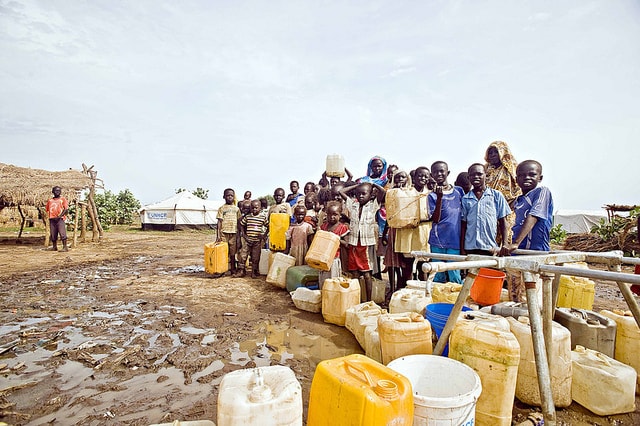The recent climate crisis is unprecedented, and it is the first global climate shift in a real sense in the history of the past two millennia, a trio of papers confirmed.
Compared to the earlier anomalies which were more regional in nature, especially the Little Ice Age during which people could do skating on the Thames, the current trend of global warming affected 98 percent and more of the planet at the end of the 20th century, Reuters reported.
“The main takeaway is that climate variability in the contemporary period is very different than what’s happened in the past 2,000 years,” Nathan Steiger, a climate scientist at Columbia University, who co-authored one of the papers published in Nature Wednesday, told Reuters. “This is definitely further evidence that fossil fuels and anthropogenic activity actually has fundamentally changed the climate,” he added.
However, climate deniers argue that climate shifts also had occurred in the past, so nothing is new or human-caused about the present time global warming. From 800 to 1200 AD, Medieval Climate Anomaly warmed the temperatures and during Little Ice Age, between the 1300s to the 1850s temperatures also fell. However, the new research found, the impact of these events including others were evidenced in the local regions covering not more than half the globe at any point of time in comparison to current climate change, The Guardian reported.
The University of Bern explained in a press release that evidence for warming and cooling periods was gathered by the researchers in the past and assumed they impacted the rest of the globe. However, researchers consulted the PAGES ( Past Global Changes) database of worldwide climate data from corals, lake sediments, ice cores, and tree rings for the papers of this week.
“It’s true that during the Little Ice Age it was generally colder across the whole world,” research team leader Raphael Neukom of the Oeschger Center for Climate Change Research at the University of Bern said, “but not everywhere at the same time. The peak periods of pre-industrial warm and cold periods occurred at different times in different places.”
For instance, due to the Little Ice Age, the Pacific was coldest in the 15th century, Europe in the 17th century and other parts in the 19th century, The Guardian reported.
“This paper should finally stop climate change deniers claiming that the recent observed coherent global warming is part of a natural climate cycle. This paper shows the truly stark difference between regional and localized changes in climate of the past and the truly global effect of anthropogenic greenhouse emissions,” Mark Maslin, the climatology professor at University College London told The Guardian.
Besides the Nature paper, the study published in Nature Geoscience focused on the five significant volcanic eruptions that caused the advance of glaciers in the Alps, cooler temperatures, and drought in Africa during the early 19th century, the University of Bern further explained.
According to researchers as these eruptions occurred at the beginning of the industrial revolution, it is not easy to determine how the climate got affected at that time due to the interaction of volcanism with the increasing greenhouse gasses’ burning.
“It does sort of mask the effect of industrial processes, where they are starting to omit more CO2, because they counteract each other,” Steiger told Smithsonian.com. “So volcanoes could cool, and humans would warm by the release of greenhouse gasses. It’s tricky to parse out what’s what.”
In the case of international targets such as the Paris Agreement that seeks to limit warming to a specific level above a pre-industrial norm, it matters.
“Given the large climatic changes seen in the early 19th century, it is difficult to define a pre-industrial climate, a notion to which all our climate targets refer,” lead author and University of Bern climatologist Stefan Brönnimann said in the university release.
Current warming is unprecedented during the study period. A final paper, published in Nature Geoscience, concluded that the documented warming rates in the latter half of the 20th century were the fastest in 2,000 years.
That finding “highlights the extraordinary character of current climate change,” Neukom told Smithsonian. com.






